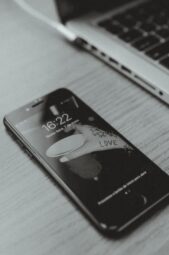The iPhone 11 Pro Max is an impressive piece of technology, boasting a range of advanced features, including a water and dust resistance rating of IP68. This means it can go underwater up to 4 meters deep for about 30 minutes without getting harmed. But remember, being water-resistant doesn’t mean it’s completely waterproof. Accidents can happen, and prolonged exposure or submersion in deeper waters can still lead to water damage. Here’s a guide on how to address water damage in the iPhone 11 Pro Max.
1. Immediate Action: Remove from Water
The moment you realize your iPhone has been submerged, remove it from the water immediately. Every second counts, as the longer it remains underwater, the higher the chance of internal damage.
2. Turn Off and Do Not Charge
Switch off your iPhone immediately. Do not attempt to charge it or turn it on, as this can cause short circuits, leading to more damage.
3. Wipe Externally
Using a soft cloth, gently wipe the exterior of the iPhone to remove any excess water. Ensure no water remains in the charging ports, speaker grills, or any other openings.
4. Eject Water from Speakers
Though it may sound unconventional, gently shaking the device or tapping it against your hand can help eject water from the speakers and charging port.
5. Use Silica Gel or Uncooked Rice
Place your iPhone in a sealed plastic bag or container with packets of silica gel or a bowl of uncooked rice. These natural desiccants can help draw out any internal moisture. Leave the iPhone in this setup for at least 24-48 hours. While this method is popular, its effectiveness varies.
6. Avoid Direct Heat
You might want to use a hair dryer or put your iPhone in the sun to make it dry faster. Refrain from this! Direct heat can damage the internal components or melt the adhesives that hold the iPhone together.
7. Wait Patiently
It can be nerve-wracking, but patience is key. Wait for at least 48 hours before trying to turn on your iPhone again. This gives it the best chance to dry out internally.
8. Check Liquid Contact Indicator (LCI)
Apple devices have a Liquid Contact Indicator which turns red when exposed to moisture. In the iPhone 11 Pro Max, you can find a special indicator inside the SIM card tray slot Eject the SIM tray and look inside the slot with a light. If the indicator is red, water has entered the device.
9. Turn On and Test
After waiting, turn on your iPhone. Observe any anomalies such as erratic behavior, malfunctioning buttons, or screen discoloration. If everything seems normal, test features like the camera, speakers, and microphone to ensure they function correctly.
10. Backup Data
Once your iPhone turns on, back up your data immediately. Even if it seems fine, water damage can have long-term effects, and it’s best to be prepared.
11. Visit an Apple Service Provider
Regardless of the perceived condition post-water exposure, it’s a good idea to visit an Apple Store or certified service provider. Experts can run tests to see how much damage is inside your phone.
Potential Complications from Water Damage
- Short circuits: Water can cause circuits to short, leading to malfunctioning or damaged components.
- Corrosion: Over time, moisture can cause metal components to corrode, affecting the iPhone’s performance and longevity.
- Speaker/Microphone Issues: Water can clog or damage the speaker and microphone, reducing audio quality or function.
- Screen Discoloration: Water seeping into the display can cause patches or lines to appear on the screen.
Preventative Measures
- Water-Resistant Cases: Think about getting a good case that can resist water. This gives extra protection in case of spills or getting wet.
- Avoid High-Risk Activities: Be mindful when using your iPhone near pools, bathrooms, or other water sources.
- Regularly Check Water Resistance Seals: Over time, the water-resistance seals on the iPhone can wear out or get damaged, especially after repairs. Regular checks can help find and fix any weak points.
12. Dealing with Swollen Battery
Issue: One of the severe repercussions of water damage is a swollen battery. This can pose a significant risk as the battery may leak or, in extreme cases, explode.
Action Steps:
- If you notice the back or front of the iPhone bulging, immediately turn it off.
- Do not charge or use the device.
- Visit an Apple service center immediately. They might recommend a battery replacement.
13. Touchscreen Sensitivity Issues
Issue: Water can interfere with the touch sensitivity of the screen, leading to missed taps or ghost touches.
Action Steps:
- Wipe down the screen to ensure there’s no external moisture.
- Restart the iPhone.
- If the issue persists, it might indicate internal damage. Seek professional help.
14. Camera Fogging
Issue: Moisture can get trapped in the camera lens, causing foggy images.
Action Steps:
- Keep the iPhone in a cool, dry place to allow the moisture to evaporate.
- If your camera stays foggy for many days, it might need professional cleaning or a new lens.
15. Malfunctioning Ports
Issue: Charging ports or headphone jacks can malfunction if affected by water.
Action Steps:
- Ensure the ports are completely dry before inserting any cables.
- Use a soft cloth or air in a can to gently dry the port.
- If charging is inconsistent or not possible, the port might be damaged and require professional attention.
16. Signal and Connectivity Issues
Issue: Water can interfere with the iPhone’s ability to connect to cellular or Wi-Fi networks.
Action Steps:
- Restart the iPhone to refresh its connection.
- Look at the SIM card for any wetness or harm.
- Reset network settings (Be careful: This will delete saved Wi-Fi passwords). Go to Settings -> General -> Reset -> Reset Network Settings.
Maintaining your iPhone Post-Water Damage
- Regular Checkups: Even if your iPhone seems to work perfectly after getting wet, schedule regular check-ups at an Apple service center. Latent issues might crop up, and it’s best to catch them early.
- Avoid Charging Overnight: Until you’re certain there’s no internal damage, avoid leaving your iPhone charging unattended for long periods. This can help prevent potential overheating or short circuits.
- Be Mindful of Temperature Fluctuations: Transitioning between extreme temperatures can cause condensation within the device, further complicating existing water damage. Store your iPhone in stable, room-temperature environments when possible.





